“Intelligent, opportunistic, cooperative, yet also aggressive/territorial, highly attentive parents, omnivorous, oft-monogamous, very vocal, highly adaptable.”
Homo sapiens?
Yes, the “cap” fits, but not exclusively.
It is also a good description of another species – one which many humans revile, resent, defame and kill.
Humans pose an oft-lethal threat, but sheep-farming and garbage-creating humans also provide rich opportunities for jackals.
Most of Namibia’s are black-backed jackals.
By day 20 of our Namibian travels we had seen a lot of them.
Usually, a sighting involved one wary individual, staying well away.
Most of them were decidedly “unkempt”, rather ragged.
Not so, this particular morning’s jackal – this individual was every bit as much a wild animal as the other jackals, but its obviously-successful approach reversed “the norm”.
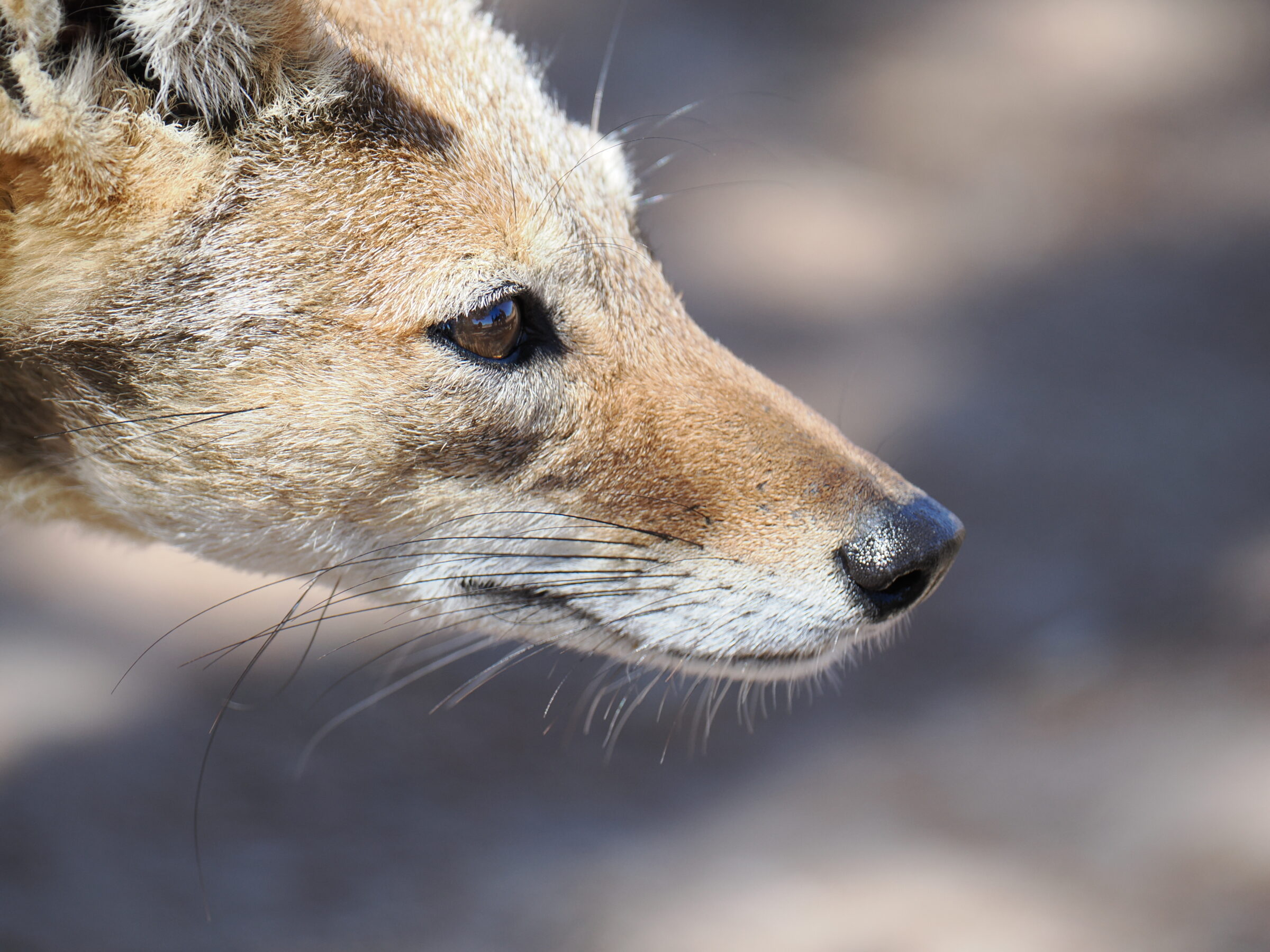
He or she (I forgot to check the undercarriage) prospered by seeking spots favoured by a particular kind of human, and being there when they were.
As future posts will illustrate, Sossusvlei – where some of the Namib Desert’s tallest, most shapely and most strikingly-coloured dunes are readily accessible – is one of “our” planet’s most visually arresting places.
More than one person has described it as “the world’s most photogenic location.”
Sossusvlei is Namibia’s top tourist attraction.
Every morning, well before sunrise, in this “nigh-uninhabitable”/“very remote” place, people from all over the world form a long queue of vehicles, waiting for the gates to open and grant them access to the sealed road (the vicinity’s only sealed road) to Sossusvlei.
Breakfast is usually enjoyed some hours later, before most vehicles whoosh back out to the gates, an hour or so away, as temperatures rapidly rise.
Accordingly, the (generally, gobsmacked) tourists/travellers are easily found, circa 9 am -10 am.
Most of them are then breakfasting, in one of a very few shaded spots.
To describe what then happens as “getting up close and personal” is not merely hackneyed; it is anthropomorphic nonsense.
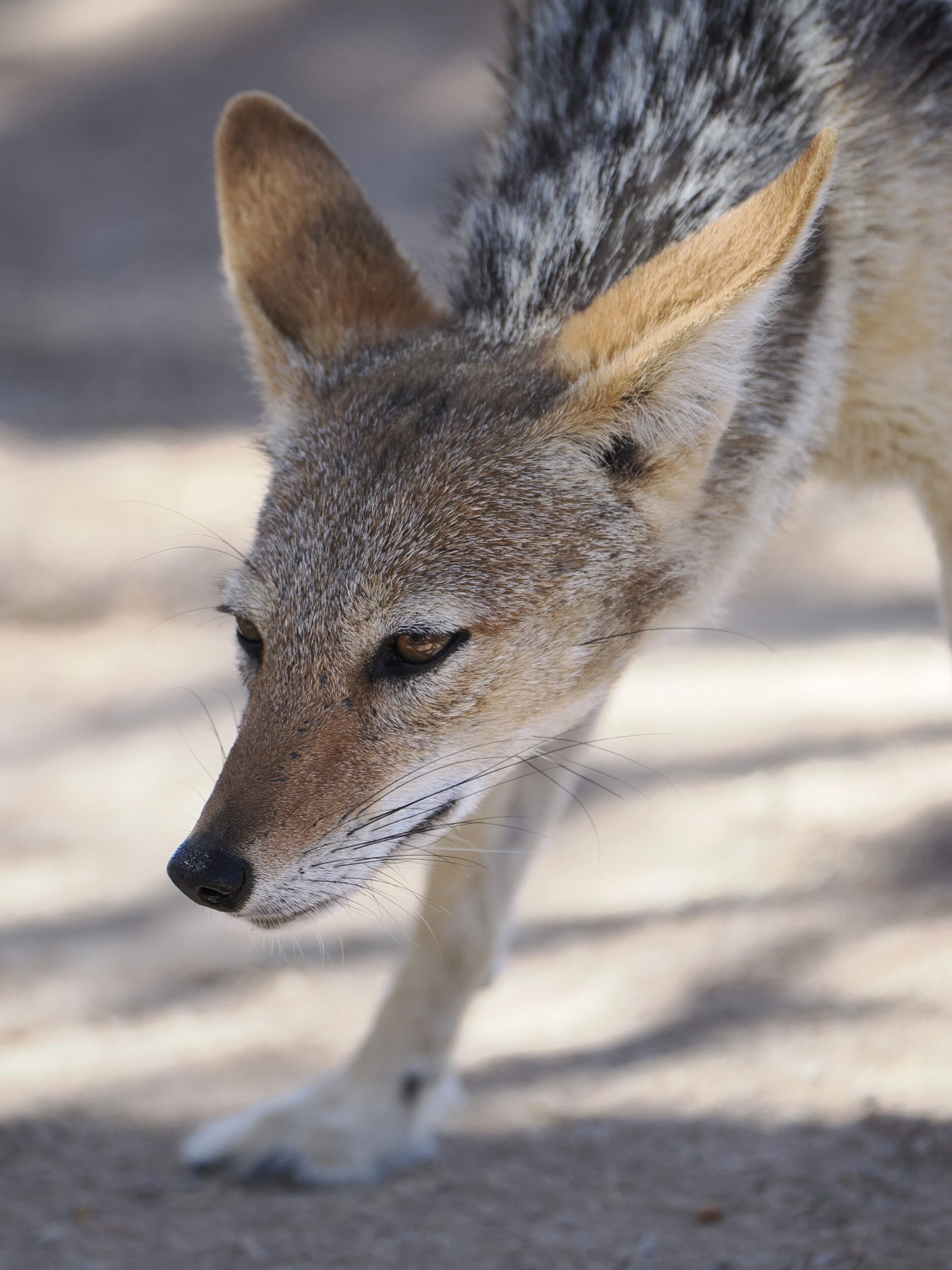
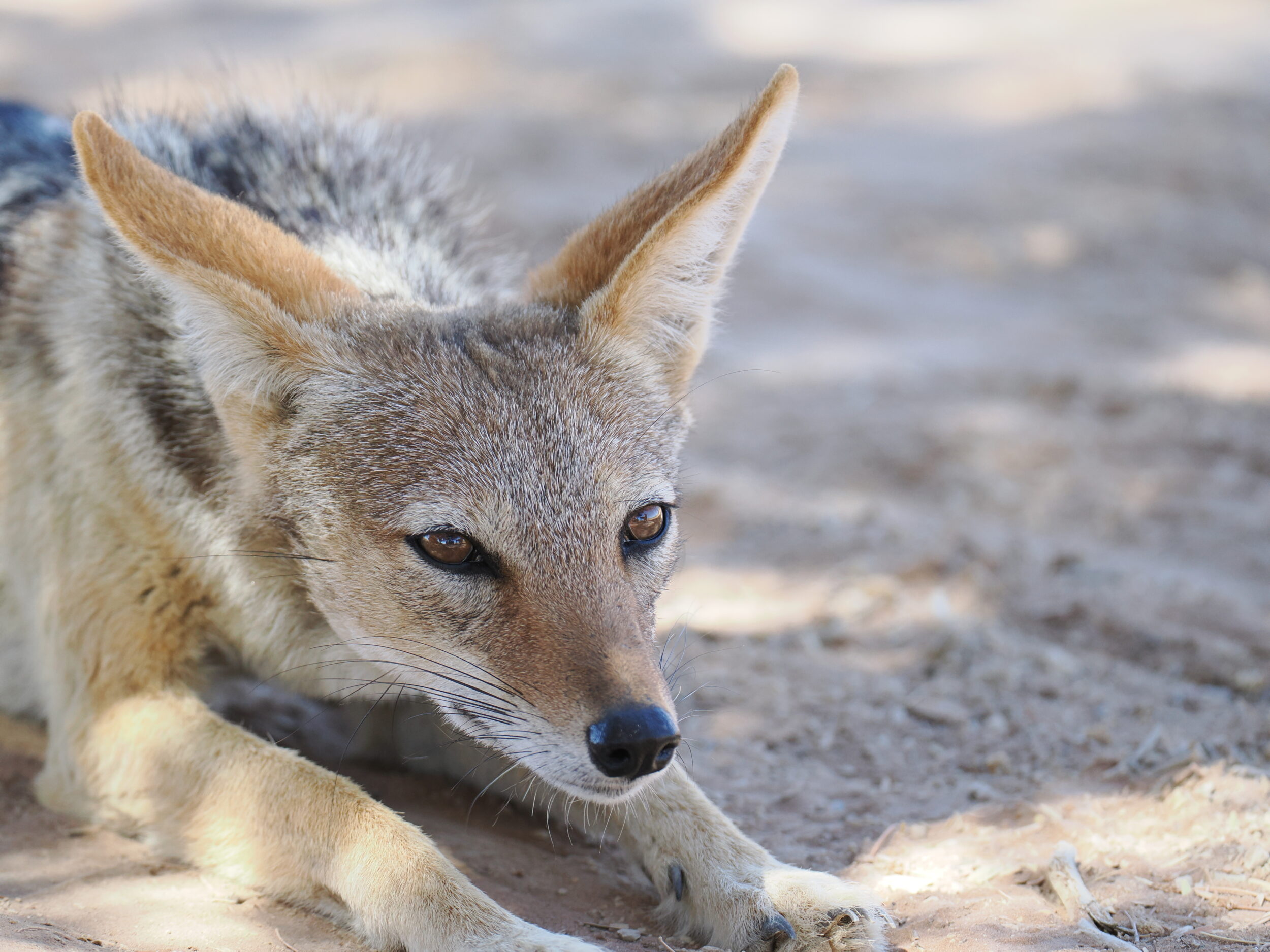
Our hero/ine is not seeking affection – and most definitely does not wish to be patted – but s/he dines very well…and we tourists are privileged to enjoy a very much closer view of a healthy, beautiful black-backed jackal than we would ever experience, otherwise.
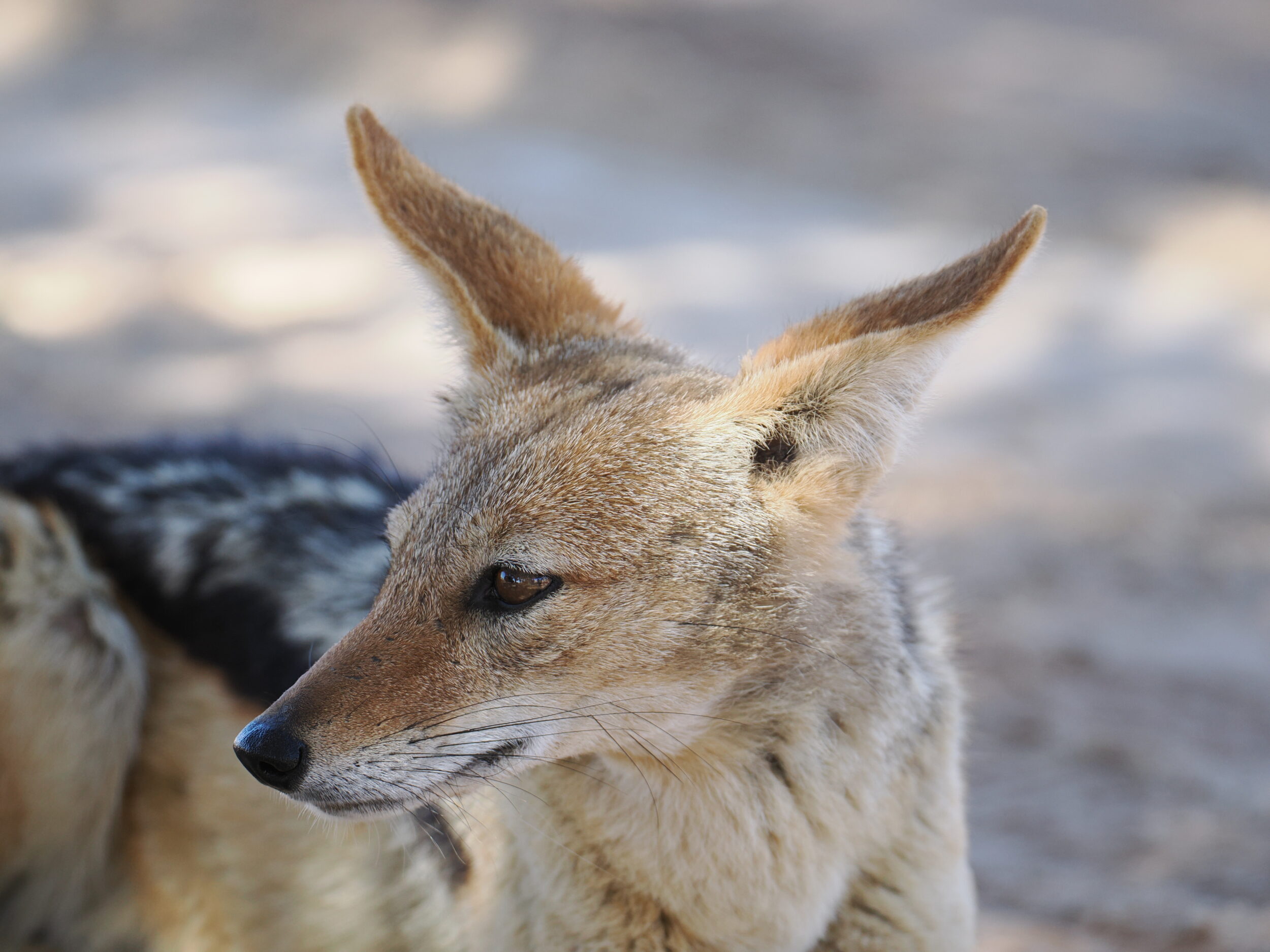
To discover more about black-backed jackals, click here, and/or click this.
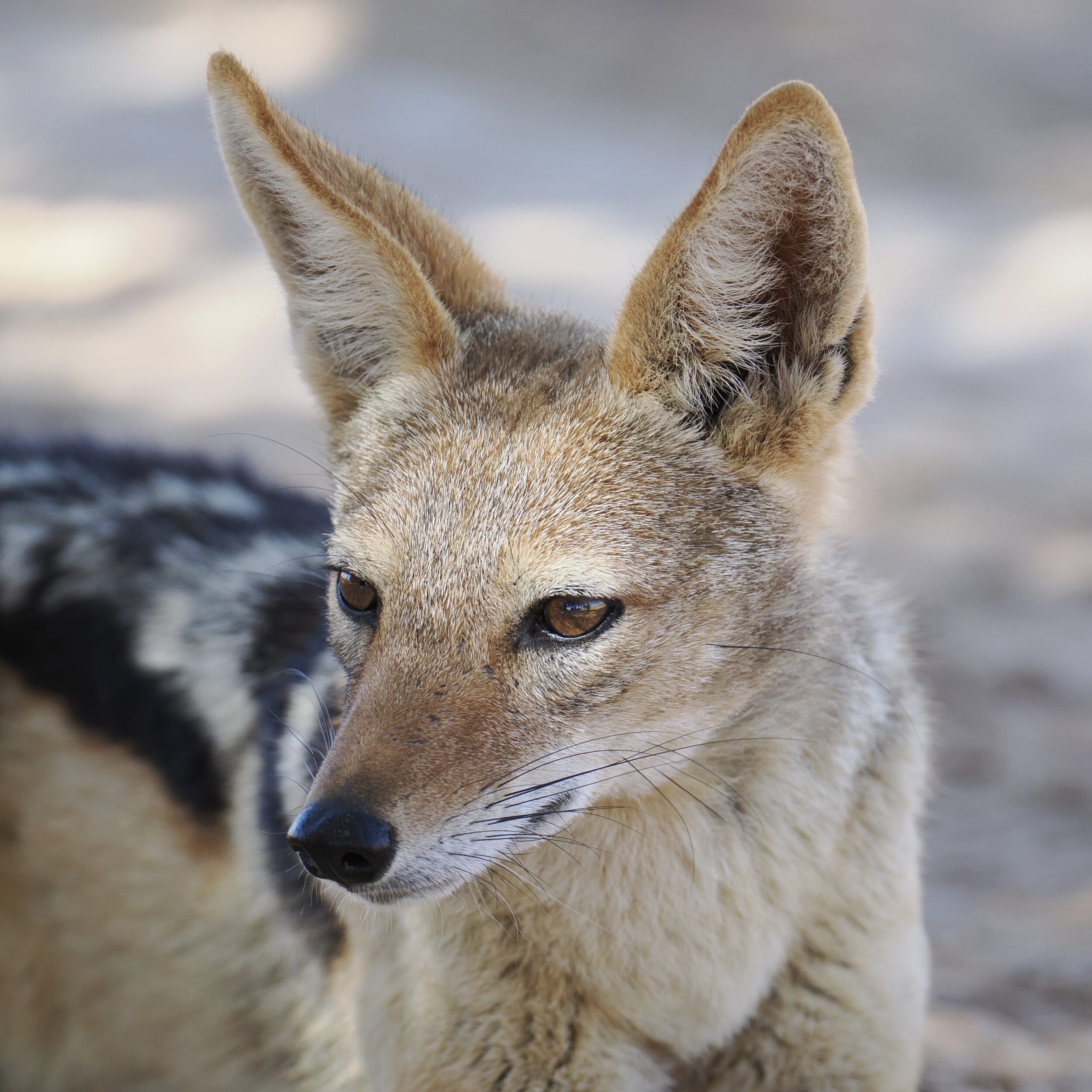
Q: why the naming discrepancy – Lupulella mesomelas v Canis mesomelas?
A: it is now reckoned that the black-backed jackal does not properly belong within the genus Canis, but should instead become one of just two “very ancient” members of the new genus Lupulella.
Black-backed jackals preceded wolves.
They were probably around for more than two million years before ancestors of “little woofykins” launched dogkind’s association with humankind.
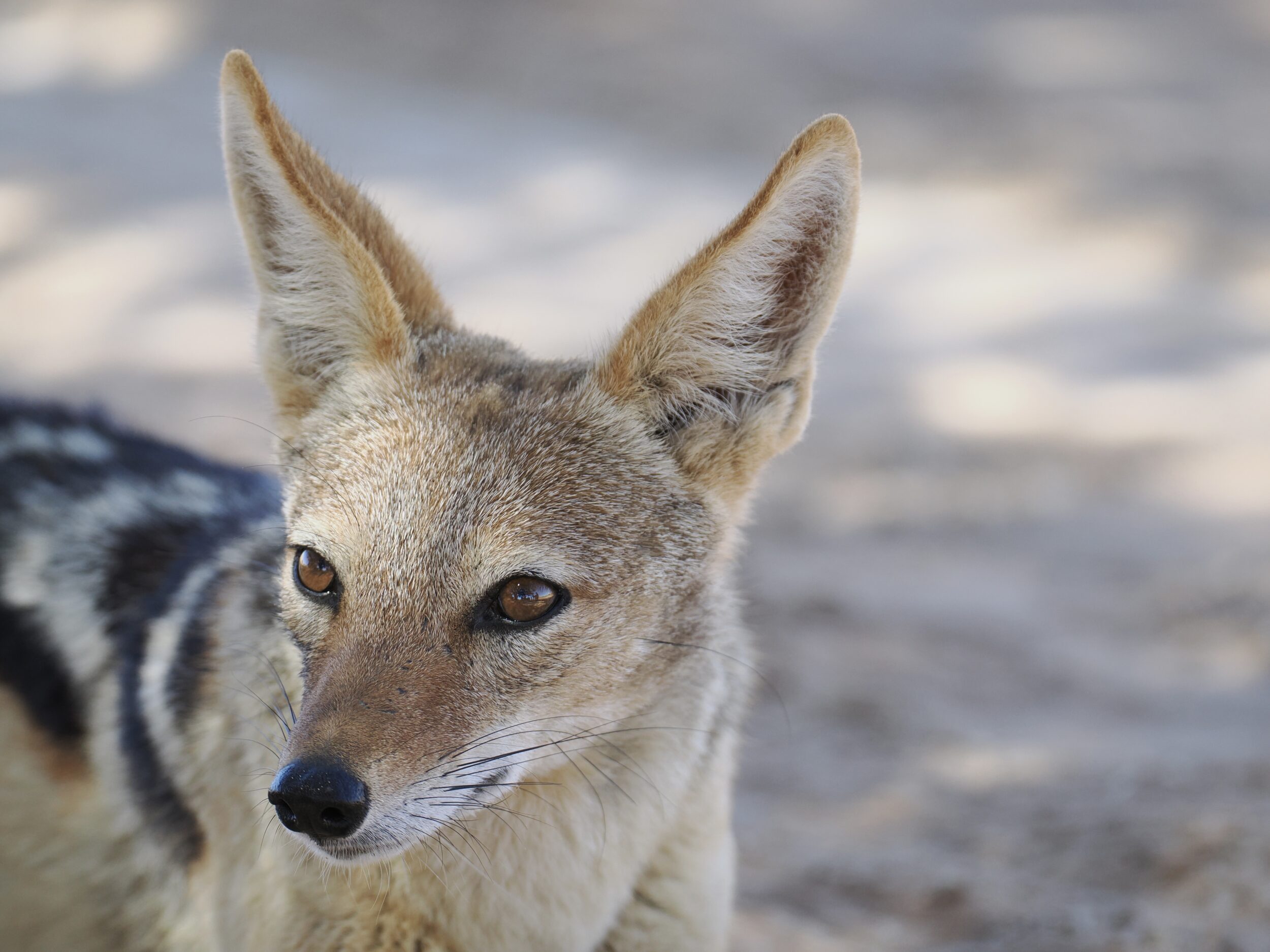
As usual Doug – high quality photos of a rare creature. I’m very envious of your wildside travels.